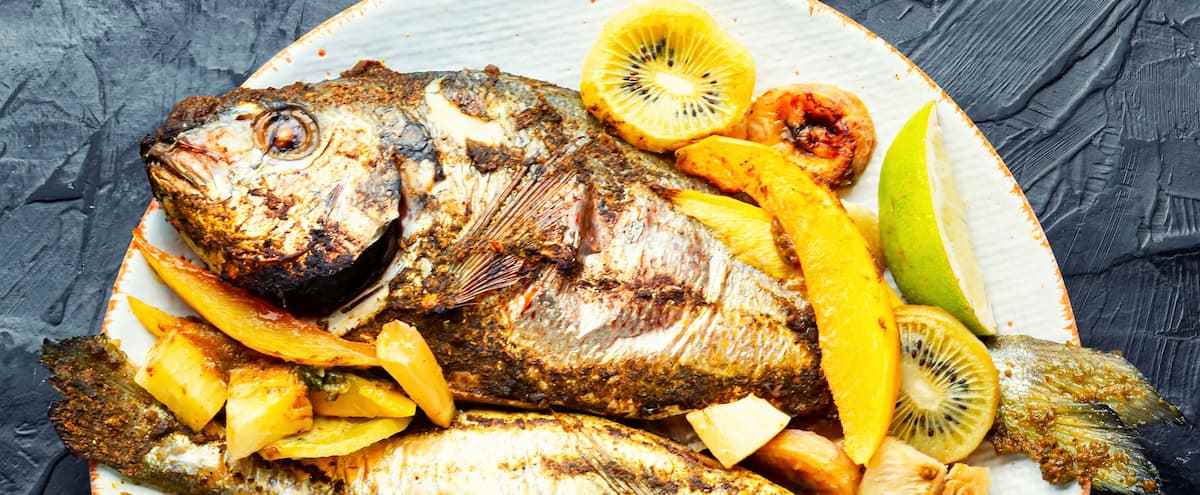A study shows that several fish and seafood are more nutritious than land-based meats, while generating much lower amounts of greenhouse gases.
Food production is responsible for about 25% of the greenhouse gases (GHGs) produced annually, with the majority of these emissions coming from raising animals, particularly beef.
Alternative solutions to our current diet, based on the consumption of meat as the main source of protein, are therefore absolutely necessary if we want to reduce the production of GHGs and minimize the negative consequences of global warming.
Plants c. animals
Since the majority of GHG emissions come from livestock, it is clear that reducing the consumption of meat, and animal products as a whole, will have the most positive impact.
For example, the production of 100 g of beef protein generates on average 100 times more GHGs than the same amount of protein from nuts or legumes. According to climate scientists, a vegan diet, without any animal products, could alone lead to a reduction in GHG emissions of the order of eight gigatonnes of CO2 per year.1.
The complete elimination of animal products is too drastic for the majority of people, but the important thing is to keep in mind that even a modest reduction in red meat intake has positive impacts on the climate. And also on health in general, because several studies have clearly shown that eating less meat, especially in the form of processed products (cold meats, fast food), is associated with significant reductions in the risk of several chronic diseases.
Fish and seafood
A recent study suggests that seafood is another very interesting alternative to “terrestrial” meats to reduce the environmental impact of food2.
In this study, the researchers established a nutrient density score that took into account essential nutrients (proteins, certain fats, vitamins and minerals) found in 41 species of seafood, as well as the three main types of terrestrial meats consumed ( beef, pork and chicken).
At the same time, the researchers analyzed the GHG emissions associated with the production of all of these foods to obtain a GHG/nutrient density ratio and thus determine which foods were the most nutritious, while having the lowest carbon footprint.
The results indicate that three major classes of seafood products had an advantageous ratio and could be considered the best choices in terms of high nutrient intake, combined with low environmental impact:
1. wild salmonids such as sockeye salmon and pink humpback salmon;
2. small pelagic fish (which live close to the surface of the water) such as sardines, herring, mackerel and anchovies;
3. cultured bivalves such as mussels and oysters.
Overall, the authors estimate that half of the species analyzed present a favorable profile (good nutrition, little environmental impact) and can be considered as very interesting alternative options to terrestrial meats.
An exception, however, would be wild crustaceans (lobster, shrimp), which have a below-average nutrient density, while being associated with high GHG emissions (almost of the same order as those produced by cattle farming).
In sum, it is not necessary to become a strict vegan to reduce the environmental impact of the foods we eat. A pesca-vegetarian diet, based on the regular consumption of fish, seafood and an abundance of vegetable products is a good (and delicious) way to achieve this, not to mention that studies have shown that this mode of diet was superior to vegetarianism and veganism in reducing colorectal cancer risk3.
1. The Intergovernmental Panel on Climate Change. Special report: Climate change and land, Figure 5.12 (2019).
2. Bianchi M et al. Assessing seafood nutritional diversity together with climate impacts informs more comprehensive dietary advice. Common. Earth Environ. 2022; 3:188.
3. Orlich MJ et al. Vegetarian dietary patterns and the risk of colorectal cancers. JAMA Intern. Med. 2015; 175: 767-76.

